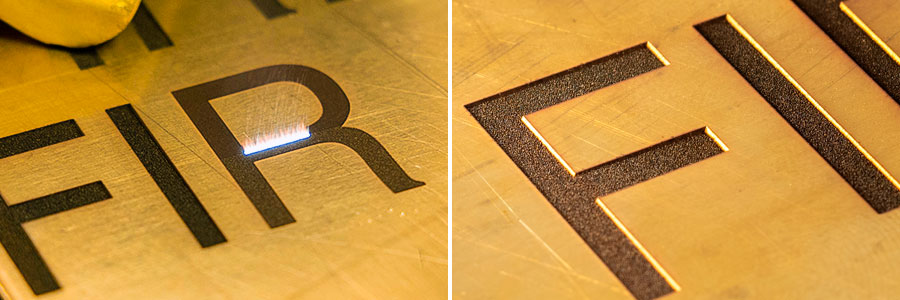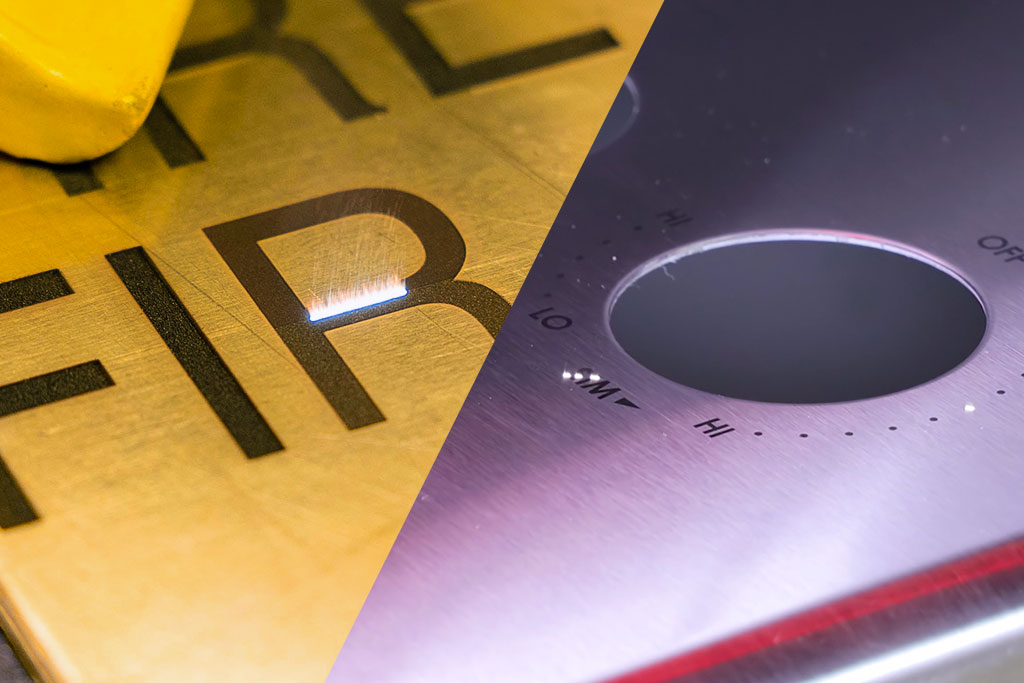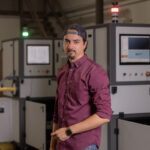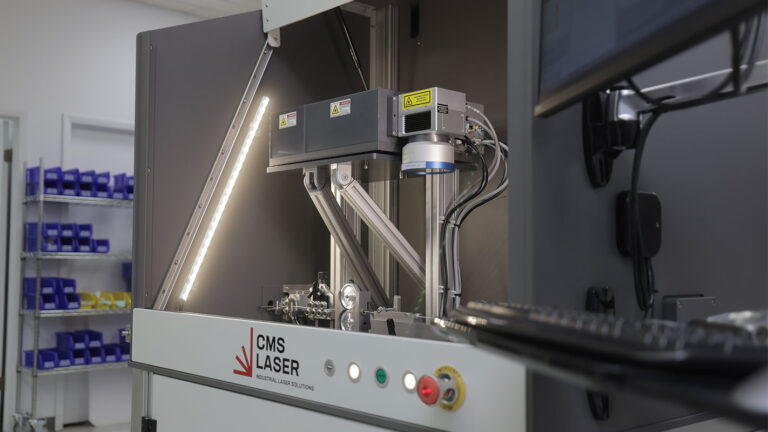Laser technology has been around for a long time, allowing manufacturers to develop new ways for assembling and tracking their products. From welding plastics to engraving metals, lasers have found a place in every industry. If you are relatively new to this technology, you are probably wondering what are the differences between laser marking and laser engraving—but more importantly, which process is right for you.
Laser Processing Methods for Metal
The term laser marking is generally used as a word for describing a group of processes. This can range from a surface marking to a deep engraving, both processes leave a “mark”. Here are the industry standard terms we use for describing the types of marking methods.
- Ablation. The terms laser engraving and laser etching are subtypes of this process and are distinguished by the depth of the cavity and the way light is reflected to show contrast. Laser engraving is the general term used for this method.
- Annealing. This is a surface level alteration of the metal, providing contrast for legibility. Laser marking is used to describe this method in more general terms.
Although these terms are often used interchangeably, there are differences between laser marking, laser engraving and laser etching.
What is Laser Engraving / Ablation?
Laser engraving, or ablation, is a process that involves high laser power with high-speed movement of the laser beam to rapidly vaporize material, revealing an image at eye level. This creates cavities in the material that are durable and are often done before the powder coating process. Ablation can also be used for removing thin layers of material like paint, anodizing, and plastic films. A process called laser cleaning is a form of ablation, which is the term used for removing contaminants like rust and oil from metal, and for cleaning molds used in injection molding.
There are two main ablation subtypes called engraving and etching. Etchings are like engravings but are recognized by raised edges that reflect light differently and have a much shallower depth.
- Engraving depth can be 0.02″ and up
- Etching depth is usually no more than 0.001″
Laser Ablation Example:

Sample A was engraved using an ultrafast picosecond fiber laser. The edges are clean, and the surrounding material was unaffected by the heat of the laser. This is called the heat affected zone (HAZ). We covered this topic in a previous post about the unique processing capabilities of ultrafast lasers.
Here are some examples of engraving / ablation applications:
- Automated Laser Engraving System for Automotive Components
- CO2 Laser Engraving System for Hearing Aids
- Removing Ink on Laser Markable Paper for Creating UDI Labels
- Laser Etching Cliché Plates with Ultrafast Lasers for Pad Printing
What is Laser Marking / Annealing?
Laser marking, or annealing, is the process of modifying the surface properties of a material to produce a contrasting mark through an oxidation process. This oxidation is achieved by slowly heating the material with low power to draw the carbon to the surface, creating a legible marking. This process works well on steel and most plastics with carbon molecules. When annealing, material is not removed from the surface which results in a smooth finish.

However, laser marking non-metals is a different story and isn’t considered an annealing process. Materials like the plastic insulation on wires are marked through the same localized heat process, resulting in a fast marking due to surface interference. This allows us to design high-speed wire marking systems utilizing this carbonization effect. The same can be said about marking other organics like wood and paper products.
Main Characteristics of Laser Annealing Metal
- Slower process than engraving and etching, in most cases
- Produces smooth-to-the-touch markings that are absent of nooks and crannies that helps prevent rust, oxidation, and bacterial buildup
- Can produce color variations in stainless steel and titanium by adjusting power level, pulse frequency, and beam speed
- Annealed markings are durable and easy to clean
Examples of Laser Marking Applications
- Medical marking applications that require a unique device identifier (UDI) to meet FDA regulations
- Marking stainless steel appliance panels
- Marking industrial stainless steel components
- Annealing stainless steel medical wires
- Laser marking plastic light bulb fixtures
Since we’re primarily talking about processing metal, plastic marking shares similarities and can be found here.
Which is Right for You?
The type of process depends on the material, desired quality, and overall cycle time. Do you need a deep engraving before a powder coating process, or just a surface level marking? Our applications lab has the widest range of laser wavelengths and optics available for developing a suitable laser configuration for your process and we are happy to help develop a solution that works for your material so that you can make an informed decision.
Our engineering department can develop fully automated solutions for marking and engraving applications to reduce laser downtime, human-errors, and ultimately improve production throughput. We also have the capability to mark material while it’s moving at high speeds with true closed loop encoder feedback. Contact us today to get started!








0 comments
Leave a comment.